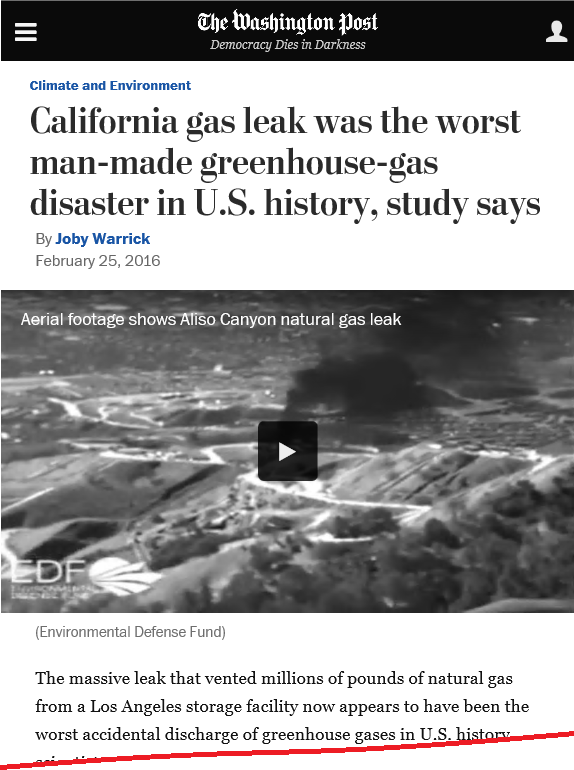Hi David—thanks for sharing the letter. Apologies for the slow reply; At the time the story ran I was temporarily parked on the science/environmental desk after
a book sabbatical, but have since moved back to the ISIS/terrorism beat, so very busy these days. Regarding your letter: Of course you’re correct in saying the amount of CO2-equivalent released into the atmosphere was small as a proportion of the global C02
budget, but it seems undeniable that the incident remains one of the biggest manmade releases in US history, as NOAA itself concluded, in this interesting
study. In that sense it seemed newsworthy to us. We do appreciate the feedback and I’m sorry your letter was not selected for publication. I understand the editors receive about 200 submissions
a day, of which only a half-dozen or so make the final cut, so the competition tends to be fierce.
Best of luck,
J
Joby Warrick
National Security Reporter - The Washington Post
Author,
Black
Flags: The Rise of ISIS,[amazon.com] Knopf Doubleday, 2015;
The
Triple Agent[amazon.com], Doubleday, 2011
W: 202 334 5603
email: joby.warrick at washpost dot com
http://projects.washingtonpost.com/staff/articles/joby+warrick/
From: David Burton
Sent: Friday, November 04, 2016 1:43 PM
To: Warrick, Joby
Subject: Re: Rejected letter to the editor / WaPo
Did you receive my email, Mr. Warrick,?
On Wed, Oct 26, 2016 at 1:57 PM, David Burton wrote:
Since the WaPo didn't run (or even acknowledge) my letter about your article, perhaps you might like to see it...
Title: Massively Minuscule Methane
On Thursday, Feb. 25, The Washington Post headline blared: “California gas leak was the worst man-made greenhouse-gas disaster in U.S. history.”
But 107,000 tons of methane (CH4) is just 0.000097 metric Gt, which is less than 0.002% of the estimated 5.284 Gt of methane in the Earth's atmosphere. In other words, it's completely insignificant.
Even if enough methane had been released to significantly affect the atmospheric methane level, the impact would have been very transient, because, even if you don't burn it, methane in the atmosphere oxidizes with a half-life of only about
6 to 8 years, into minute amounts of harmless carbon dioxide (CO2) and water (H2O):
Only in the crazy world of climate politics could a temporary 0.002% increase in a minor greenhouse gas be described by activists and their journalist allies with apocalyptic terms like "massive," "worst," "historic," "disaster," and "huge,"
all in one article. The only thing "massive" about this incident is the con job about it by climate activists -- and the Washington Post swallowed it, hook, line and sinker.
|
|

